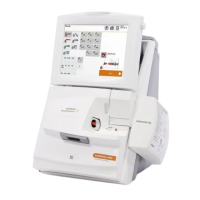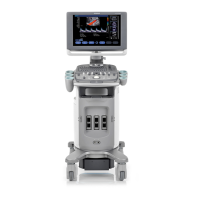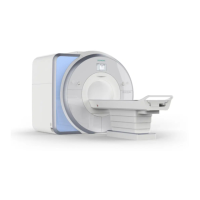Rapidlab 1200 Operator’s Guide: System Overview and Intended Use 1-37
02087462 Rev. V
pCO
2
Sensor
The pCO
2
sensor is based upon the electrode described by Severinghaus and
Bradley.
8
The pCO
2
sensor is a complete electrochemical cell that consists of a
measuring electrode and an internal reference electrode. The measuring electrode,
which is a pH electrode, is surrounded by a chloride bicarbonate solution. A
membrane permeable to gaseous CO
2
separates this solution from the sample. The
internal reference electrode, which contains a silver/silver chloride electrode
surrounded by the chloride-bicarbonate solution, provides a fixed potential.
Figure 1-31 pCO
2
Sensor
As the sample comes in contact with the membrane, CO
2
diffuses into the
chloride-bicarbonate solution, which causes a change in the hydrogen ion activity:
The internal pH electrode detects the change in hydrogen concentration occurring
in the chloride bicarbonate solution and generates a half-cell potential. This
potential, when compared to the fixed potential of the reference electrode, results
in a measurement that reflects pH change in the chloride bicarbonate solution. The
change in pH is related to the log of the partial pressure of CO
2
.
1 Measuring electrode contact
2 Internal reference electrode contact (Ag/AgCl)
3 Sample path

